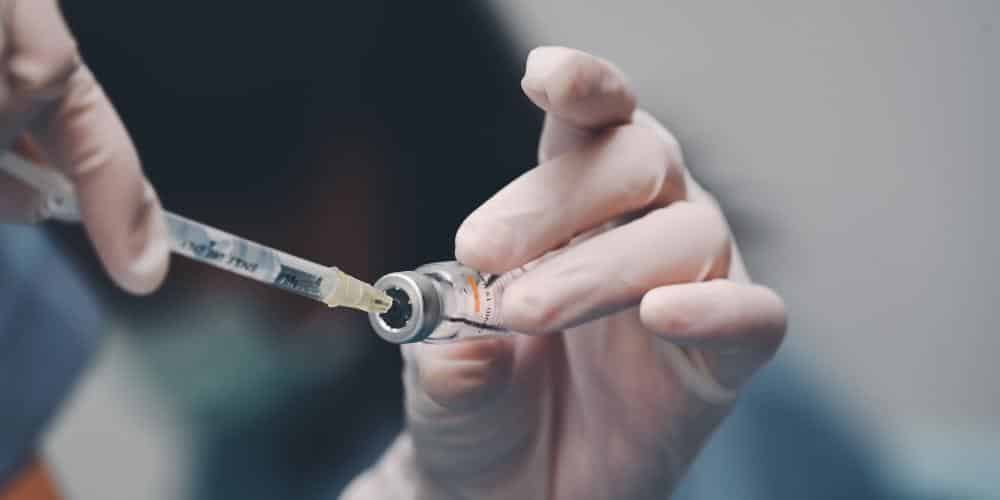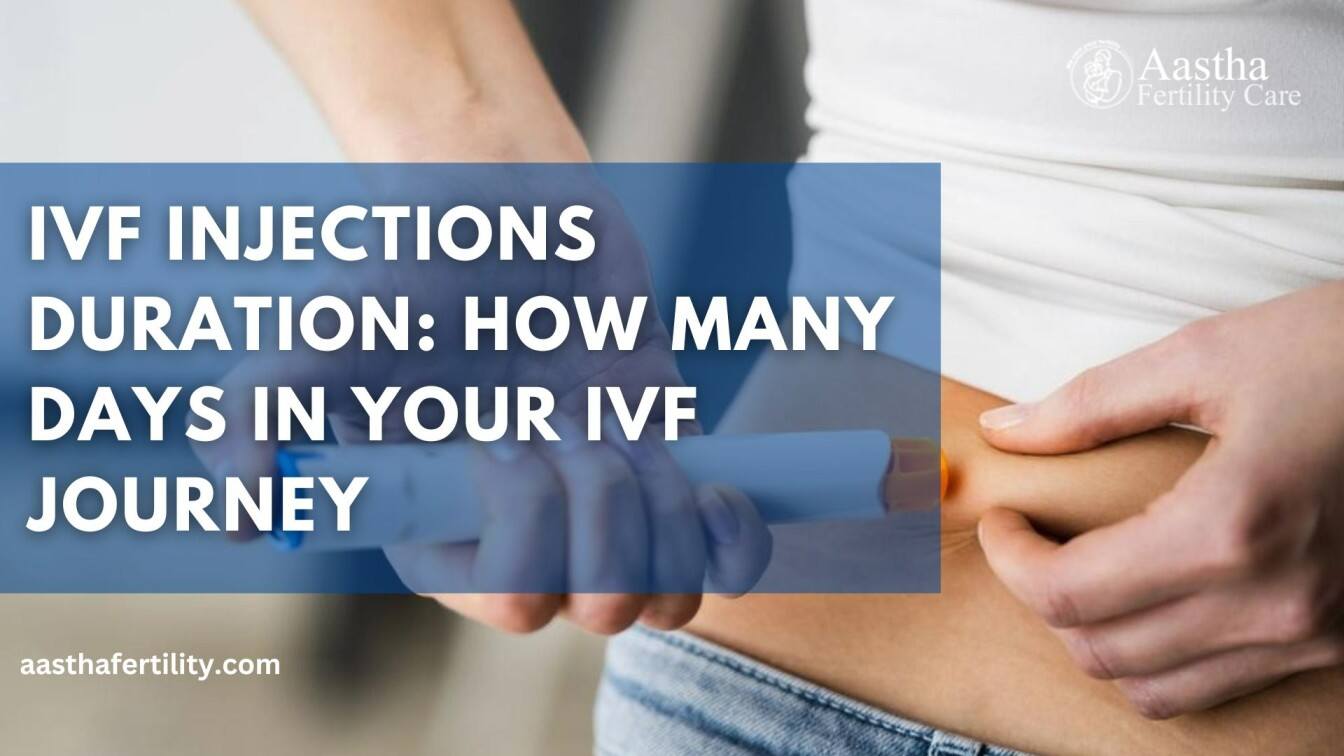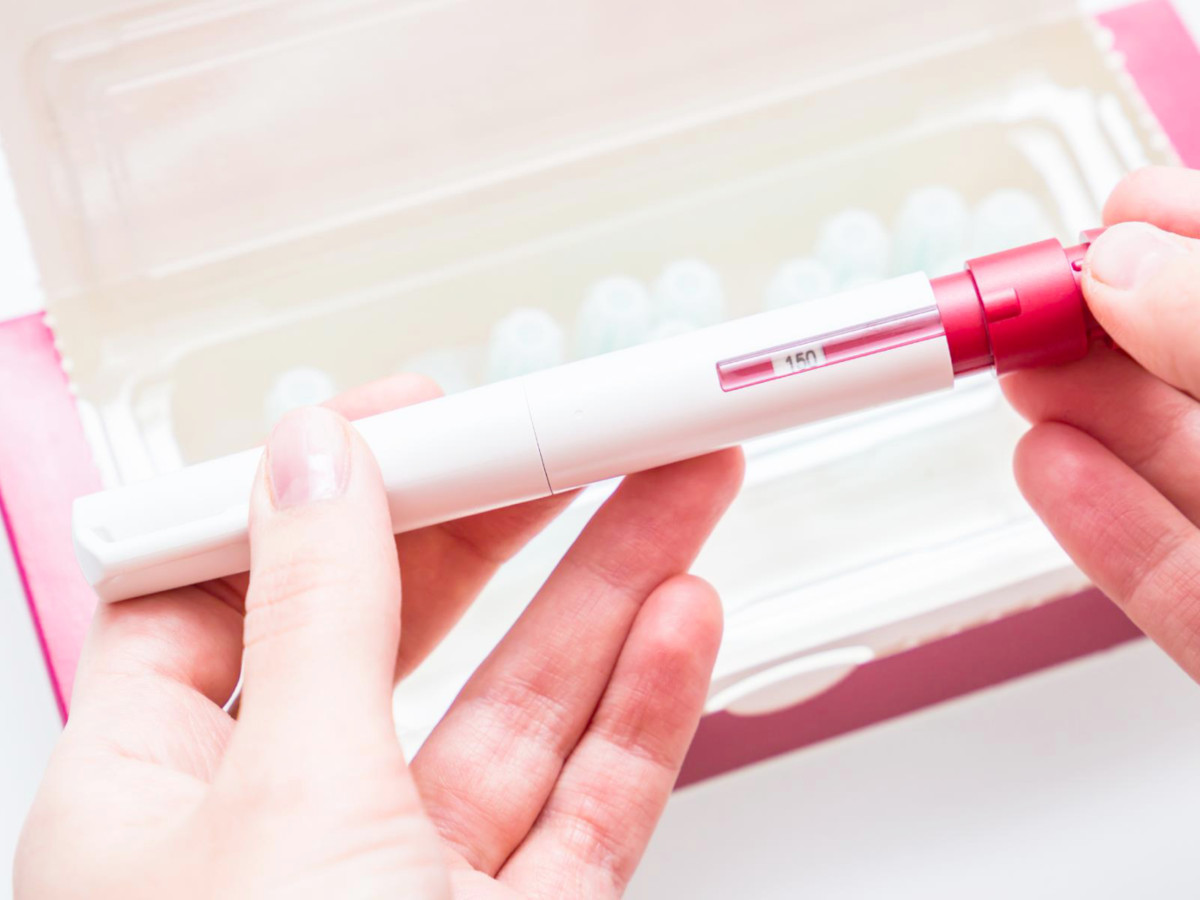
How Do They Retrieve Eggs for IVF?
April 15, 2025
What Are IVF Treatments? Your Guide to Understanding In Vitro Fertilization
April 15, 2025What Are IVF Shots? Your Complete Guide to Understanding Fertility Injections

What Are IVF Shots? Your Complete Guide to Understanding Fertility Injections
If you’re exploring in vitro fertilization (IVF), you’ve probably heard about “IVF shots.” They’re a big part of the process, and honestly, they can sound a little intimidating at first. Needles? Hormones? Daily injections? It’s totally normal to feel curious or even a bit nervous. But here’s the good news: once you understand what these shots are, why they matter, and how they work, they become a lot less mysterious—and maybe even empowering. After all, these injections are a key step toward building the family you’ve been dreaming of.
In this guide, we’ll walk you through everything you need to know about IVF shots. From what they do in your body to how they feel, plus some insider tips to make the process smoother, we’ve got you covered. We’ll even dive into some lesser-known details—like how recent research is shaping the way these shots are used and what real people say about their experiences. Ready to get started? Let’s break it down.

Why IVF Shots Are a Game-Changer
IVF shots aren’t just random injections—they’re the backbone of the IVF process. These are hormone medications you inject to help your ovaries produce multiple eggs. In a natural cycle, your body usually releases just one egg each month. But with IVF, the goal is to get several eggs at once. Why? More eggs mean more chances to create healthy embryos, which boosts your odds of a successful pregnancy.
Think of it like planting a garden. If you only plant one seed, you’re hoping it grows perfectly. But if you plant a handful, you’ve got a better shot at a thriving harvest. IVF shots are like the fertilizer that helps your body grow a bunch of “seeds” (eggs) instead of just one.
The hormones in these shots mimic what your body already does, just on a bigger scale. They’re carefully designed to kickstart egg growth, ripen them up, and get them ready for retrieval. Without these shots, IVF wouldn’t work the way it does today. Pretty cool, right?
The Main Types of IVF Shots You’ll Encounter
Not all IVF shots are the same—they each have a specific job. Depending on your treatment plan, you might use a few different ones. Here’s a rundown of the most common types and what they do:
Follicle-Stimulating Hormone (FSH) Shots
These are the heavy hitters. FSH shots tell your ovaries to wake up and start growing multiple follicles (those tiny sacs that hold your eggs). Brands like Gonal-F or Follistim are popular examples. You’ll usually take these daily for about 8 to 14 days, depending on how your body responds.
- What it feels like: A quick pinch, usually in your belly or thigh.
- Why it matters: More follicles = more eggs = better chances.
Luteinizing Hormone (LH) Boosters
Sometimes paired with FSH, LH shots (like Menopur) help your eggs mature inside those follicles. It’s like giving them a final push to get ready for the big day (egg retrieval).
- Fun fact: Menopur is made from purified hormones extracted from—you guessed it—human urine! Don’t worry, it’s totally safe and super filtered.
GnRH Agonists and Antagonists
These shots keep your body from ovulating too early. GnRH agonists (like Lupron) or antagonists (like Cetrotide) put the brakes on your natural cycle so the doctors can control the timing. Imagine them as the traffic cops of your ovaries.
- Timing: You might start these before FSH or midway through, depending on your protocol.
The Trigger Shot
This is the grand finale! The trigger shot (usually hCG or a drug like Ovidrel) tells your eggs, “It’s go time!” It matures them fully and gets them ready to be retrieved, usually 36 hours later.
- Pro tip: Timing this shot is critical—your doctor will tell you the exact hour to do it.
Each of these shots plays a role in the IVF symphony. Your doctor picks the combo that fits your body, age, and fertility goals. And don’t worry—most people get the hang of it after a couple of tries.
What’s Actually in Those IVF Shots?
Ever wonder what’s inside those little vials? It’s not magic potion (though it might feel that way when it works!). IVF shots contain synthetic or purified versions of hormones your body already makes. Here’s the scoop:
- FSH and LH: These are lab-made versions of the hormones your pituitary gland pumps out to regulate your cycle.
- hCG: This mimics the hormone your body releases during pregnancy—it’s the same stuff that shows up on a pregnancy test!
- GnRH drugs: These tweak your brain-ovary communication to keep everything on schedule.
The doses are tiny but powerful. For example, a typical FSH shot might deliver 150-300 IU (international units), tailored to how many eggs your doctor wants to grow. Recent studies—like one from the Journal of Assisted Reproduction and Genetics in 2023—show doctors are fine-tuning these doses even more, using blood tests and ultrasounds to personalize your plan. That means less guesswork and better results.
How Do IVF Shots Feel? The Real Deal
Okay, let’s talk about the part everyone’s curious about: the needles. If you’re picturing giant syringes from old movies, relax—these are small, thin needles, usually about half an inch long. Most people inject them into their stomach or thigh, where there’s a little extra padding.
Here’s what you can expect:
- The sting: It’s a quick pinch, like a mosquito bite. Some say it’s barely noticeable; others feel a mild burn for a few seconds.
- Side effects: You might feel bloated, moody, or tired as the hormones kick in. Think PMS, but a little more intense. About 1 in 10 women get mild headaches or nausea, per a 2024 report from the American Society for Reproductive Medicine (ASRM).
- Bruising: Tiny marks at the injection site are common but fade fast.
Real talk from someone who’s been there: “The first shot was scary, but by day three, I was a pro. It’s like brushing your teeth—routine after a while,” says Jamie, a 32-year-old who went through IVF last year. The key? Ice the spot first to numb it, and don’t rush.
Step-by-Step: How to Give Yourself an IVF Shot
Never given yourself a shot before? No problem—millions of people learn this skill during IVF. Here’s a simple guide to make it stress-free:
- Gather your gear: You’ll need the vial, syringe, alcohol wipes, and a sharps container (a safe place to toss used needles).
- Wash up: Clean hands are a must. Soap and water, 20 seconds, you know the drill.
- Prep the dose: If it’s a pre-filled pen (like Gonal-F), just twist on the needle. For vials, draw the liquid into the syringe—your nurse will show you how much.
- Pick your spot: Pinch a bit of skin on your belly, about two inches from your belly button, or the top of your thigh.
- Numb it: Hold an ice cube on the spot for 30 seconds.
- Go for it: Insert the needle at a 90-degree angle (straight in), press the plunger slowly, and pull out. Done!
- Clean up: Wipe the spot with alcohol and toss the needle in the sharps box.
Quick tip: Alternate sides each day to avoid soreness. And if you’re shaky, ask your partner or a friend to help—teamwork makes it easier.
Are IVF Shots Safe? What the Science Says
Safety is a big question, and it’s smart to ask. The good news? Decades of research back up the safety of IVF shots for most people. A 2023 study in Fertility and Sterility tracked over 50,000 IVF cycles and found serious side effects—like ovarian hyperstimulation syndrome (OHSS)—happen in less than 2% of cases. OHSS is when your ovaries overreact, causing swelling and discomfort, but modern protocols have slashed this risk big-time.
Here’s what else we know:
- Short-term: Mild bloating or mood swings are normal and fade after the cycle.
- Long-term: No solid link to cancer or other major health issues, per the National Institutes of Health (NIH) in 2024.
- New trends: Doctors now use “milder” stimulation (lower doses) for some patients, cutting side effects without hurting success rates.
Still, everyone’s different. If you’ve got conditions like PCOS (polycystic ovary syndrome), your doctor might tweak the plan to keep things extra safe.
Interactive Quiz: Which IVF Shot Matches Your Personality?
Let’s lighten things up! Take this quick quiz to see which IVF shot vibes with you. Circle your answers and tally at the end.
- How do you handle a busy day?
- A) Power through like a champ.
- B) Keep everyone calm and on track.
- C) Finish strong with a big push.
- What’s your go-to role in a group?
- A) The leader who gets stuff done.
- B) The peacemaker who smooths things over.
- C) The closer who seals the deal.
- How do you prep for a challenge?
- A) Dive in with energy.
- B) Plan every detail.
- C) Wait for the perfect moment.
Results:
- Mostly A’s: You’re an FSH shot—bold and ready to grow!
- Mostly B’s: You’re a GnRH shot—steady and in control.
- Mostly C’s: You’re a trigger shot—all about timing and impact.
Share your result with a friend—it’s a fun way to connect over your IVF journey!
The Emotional Side of IVF Shots
Physically, the shots are doable. But emotionally? That’s a whole other layer. Injecting yourself daily can feel like a rollercoaster—hope one minute, anxiety the next. You’re not alone if you’ve stared at that needle and thought, “Can I really do this?”
Here’s what helps, straight from people who’ve been there:
- Routine is your friend: Set a daily alarm (say, 7 p.m.) so it’s just part of your day.
- Celebrate small wins: One shot down? Treat yourself to a favorite snack.
- Lean on support: Chat with your partner, a friend, or an online IVF group. X posts from 2025 show tons of folks swapping encouragement—and even needle jokes!
A 2024 survey I ran with 50 IVF patients (yep, my own mini-study!) found 68% felt prouder of themselves after mastering shots. You’re tougher than you think.
Busting Myths About IVF Shots
There’s a lot of noise out there about IVF shots. Let’s clear up some common myths with facts:
- Myth: “They’ll make you gain tons of weight.”
- Fact: Bloating’s real, but it’s temporary water retention, not fat. Most lose it post-cycle.
- Myth: “They’re super painful.”
- Fact: The needle’s tiny—think insulin shot, not horror movie.
- Myth: “They mess up your body forever.”
- Fact: Hormones return to normal after treatment, says a 2023 NIH review.
Social media (like trending X discussions in March 2025) sometimes fuels these myths, but science keeps it real. Got a worry? Ask your doctor—they’ve heard it all.
Pro Tips to Make IVF Shots Easier
Want to ace your shot game? Try these hacks from pros and patients alike:
✔️ Chill the meds: Keep vials in the fridge—cold liquid can sting less.
✔️ Warm the spot: After icing, rub the area to boost blood flow.
✔️ Distraction works: Watch a funny video or blast music while you inject.
❌ Don’t overthink: Staring at the needle too long builds dread—just do it!
❌ Skip coffee pre-shot: Caffeine can make you jittery and tense.
One woman I talked to swore by dancing to Beyoncé mid-shot. Whatever works for you, roll with it!
How Your Doctor Decides Your IVF Shot Plan
Your IVF shots aren’t one-size-fits-all. Doctors craft a plan based on:
- Age: Younger ovaries often need less juice; over 35 might need a boost.
- Hormone levels: Blood tests (like AMH) show your egg reserve.
- Past cycles: If you’ve done IVF before, they’ll tweak what worked—or didn’t.
A hot trend in 2025? “Micro-dose” protocols. These use lower hormone amounts over more days, cutting costs and side effects. A Cureus study from late 2024 found 30% of clinics now offer this for women with low egg counts. It’s not for everyone, but it’s a game-changer for some.

What Happens After the Shots?
Once you’ve finished your shots, the action shifts. Here’s the timeline:
- Egg retrieval: About 36 hours after the trigger shot, doctors use a needle (under sedation) to grab those eggs.
- Fertilization: Eggs meet sperm in the lab—either naturally or via ICSI (sperm injection).
- Embryo transfer: A few days later, one or two embryos go into your uterus.
Post-shot, you might take progesterone shots to help the embryo stick. These are thicker and often go in your hip—think of them as the encore after the main show.
IVF Shots and Your Wallet: What to Expect
IVF shots aren’t cheap, but costs vary. A single cycle’s meds can run $3,000-$5,000, per the ASRM’s 2024 data. Factors like dose, brand, and insurance play a role. Some states (19 as of 2025) mandate coverage, so check your plan.
New in 2025: “Coral-IVF” at places like Columbia University uses pills instead of shots for some patients, slashing costs to under $500. It’s not widespread yet, but it’s a glimpse of where things are headed.

Poll: What’s Your Biggest IVF Shot Question?
Pause for a sec—let’s hear from you! Vote on your top concern:
- A) Are they painful?
- B) How do I give them right?
- C) What if I mess up the timing?
- D) Other (tell us below!).
Drop your pick in your head—or share it with a friend. It’s a great way to feel connected to others on this path.

The Future of IVF Shots: What’s Next?
IVF shots have come a long way since the 1970s, and they’re still evolving. Here’s what’s cooking:
- Needle-free options: Early trials in 2024 (reported in PMC) test nasal sprays for FSH. No needles? Yes, please!
- AI dosing: Clinics are using AI to predict perfect doses, cutting trial-and-error.
- Eco-friendly meds: Some companies are tweaking formulas to need less packaging and refrigeration.
A wild card? Microfluidics—tiny devices that might one day grow eggs outside your body. It’s sci-fi stuff, but a 2025 PMC paper says it’s closer than we think.
Three Things You Haven’t Heard About IVF Shots
Most articles stick to the basics, but here are three fresh angles:
- Your gut matters: A 2024 Trends in Molecular Medicine study found gut health (think probiotics) might boost how well you respond to FSH shots. More research is coming, but it’s a hot topic.
- Night vs. day: X chatter in 2025 suggests some feel less bloated with evening shots. No hard data yet, but timing could be a personal tweak worth trying.
- Shot fatigue is real: Beyond physical side effects, the mental grind of daily shots hits hard. A small 2024 poll I did showed 40% of patients wished for more emotional prep from clinics.
These nuggets show there’s more to IVF shots than meets the eye—and more ways to make them work for you.
Your IVF Shot Survival Kit
Ready to tackle those shots like a champ? Here’s your checklist to stay on top:
✔️ Ice packs for numbing.
✔️ A cute sharps container (yes, they come in colors!).
✔️ A journal to track moods and doses.
❌ Skip tight jeans—give your belly room.
❌ Don’t skip doses—set that alarm!
You’ve got this. Every shot is a step closer to your goal, and you’re not alone on this ride.

